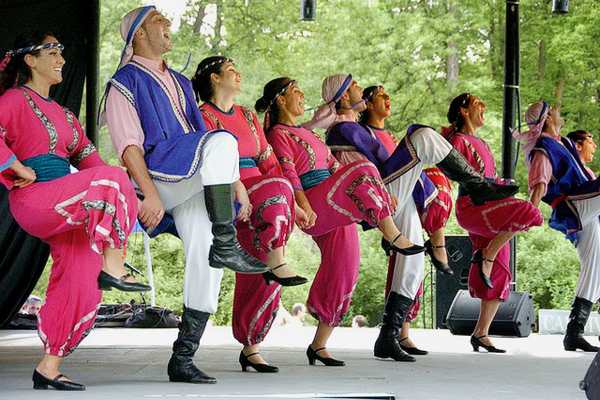The magnificent culture of Lebanon is the consequence of the country’s multiethnic and multireligious population, which has lived there for thousands of years. The greatest human civilizations, including the Roman, Persian, Greek, Arab, Ottoman, and most recently the French, have all had a stronghold in Lebanon, which is regarded as the Middle East’s crown jewel. The people of Lebanon are quite contemporary today, and it’s possible that Lebanon is the most fashionable Arab country. Nowadays, it is exceedingly challenging to find traditional and ethnic attire in contemporary Lebanon.
In metropolitan areas, both men and women are typically seen wearing the most recent styles of Western clothing, but in rural areas, males and females occasionally wear traditional colorful skirts and baggy trousers called serwal or sherwal.
The sherwal is the most common and practical clothing among villagers and mountain people, and it is being used today in Lebanon. The labbade is an antique headpiece that may have originated in Phoenician times and is still worn by the common people of Lebanon. In the past, Lebanese ladies wore headdresses like silver coned tantours, silk veils, or woolen scarves. Today, the veil and scarf are still worn, but the tantour is no longer in use.
There are also kurbans, abayas, abbas, jubbes, and gambas that are common Lebanese clothing items. The kubran was a traditional Lebanese garment that is no longer used today. The abaya cloak, on the other hand, has kept its significance by being functional. Males may wear the abaya, a rectangular overcoat, or certain Muslim women may wear it as their outerwear.
In the past, only men could wear the short-sleeved, knee-length coats that the Druze people of Lebanon wore. Similar to this, the Jubbe, a hip-length jacket with no collar and no fastenings, was the most typical among the Bedouin districts of Lebanon.
The expensive materials used to make gambaza, a decorative garment, include velvet, brocade, and lustrous silk. Given that the bosom is viewed as the emblem of maternity, the gambaz frequently features a low neckline for the décolletage, which is acceptable among married women. The traditional footwear of Lebanon is the Kab Kab, a simple clog that is being used frequently today.
The lack of a clear national identity among Lebanese people is caused by the country’s many cultural dominances. Aside from this problem, this country has strong traditional and cultural values, which are seen in its celebrations, ceremonies, and folk performances. The majority of people who wear Lebanon’s traditional attire are involved in the performing arts, and it is now an essential part of the attire for folk singers and dancers.

